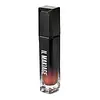What's inside
What's inside
 Key Ingredients
Key Ingredients

 Benefits
Benefits

 Concerns
Concerns

 Ingredients Side-by-side
Ingredients Side-by-side

Polybutene
Isostearyl Isostearate
EmollientHydrogenated Polyisobutene
EmollientPolyglyceryl-2 Tetraisostearate
EmollientHydrogenated Styrene/Methylstyrene/Indene Copolymer
Synthetic Beeswax
Emulsion StabilisingCaprylic/Capric Triglyceride
MaskingCalcium Sodium Borosilicate
Mica
Cosmetic ColorantStearalkonium Bentonite
Gel FormingSilica
AbrasiveAroma
Propylene Carbonate
SolventPentaerythrityl Tetra-Di-T-Butyl Hydroxyhydrocinnamate
AntioxidantDicalcium Phosphate
AbrasiveMentha Piperita Oil
MaskingTocopherol
AntioxidantCalcium Aluminum Borosilicate
Limonene
PerfumingButylphenyl Methylpropional
PerfumingTin Oxide
AbrasivePolybutene, Isostearyl Isostearate, Hydrogenated Polyisobutene, Polyglyceryl-2 Tetraisostearate, Hydrogenated Styrene/Methylstyrene/Indene Copolymer, Synthetic Beeswax, Caprylic/Capric Triglyceride, Calcium Sodium Borosilicate, Mica, Stearalkonium Bentonite, Silica, Aroma, Propylene Carbonate, Pentaerythrityl Tetra-Di-T-Butyl Hydroxyhydrocinnamate, Dicalcium Phosphate, Mentha Piperita Oil, Tocopherol, Calcium Aluminum Borosilicate, Limonene, Butylphenyl Methylpropional, Tin Oxide
Polybutene
Hydrogenated Polydecene
EmollientOctyldodecanol
EmollientIsocetyl Stearate
EmollientOctyldodecyl Stearoyl Stearate
EmollientDicalcium Phosphate
AbrasiveHydrogenated Styrene/Isoprene Copolymer
Silica Dimethyl Silylate
EmollientCalcium Sodium Borosilicate
Mica
Cosmetic ColorantAroma
Pentaerythrityl Tetra-Di-T-Butyl Hydroxyhydrocinnamate
AntioxidantTocopherol
AntioxidantTin Oxide
AbrasiveLinalool
PerfumingCI 19140
Cosmetic ColorantCI 15850
Cosmetic ColorantCI 77891
Cosmetic ColorantCI 42090
Cosmetic ColorantCI 77491
Cosmetic ColorantPolybutene, Hydrogenated Polydecene, Octyldodecanol, Isocetyl Stearate, Octyldodecyl Stearoyl Stearate, Dicalcium Phosphate, Hydrogenated Styrene/Isoprene Copolymer, Silica Dimethyl Silylate, Calcium Sodium Borosilicate, Mica, Aroma, Pentaerythrityl Tetra-Di-T-Butyl Hydroxyhydrocinnamate, Tocopherol, Tin Oxide, Linalool, CI 19140, CI 15850, CI 77891, CI 42090, CI 77491
Ingredients Explained
These ingredients are found in both products.
Ingredients higher up in an ingredient list are typically present in a larger amount.
Aroma refers to an ingredient, or mixture of ingredients, that impart or mask a flavor.
The name is slightly confusing. This is because INCI associates aroma with flavor instead of smell.
Here is the official definition from the The International Cosmetic Ingredient Dictionary and Handbook:
“Aroma is a term for ingredient labeling used to identify that a product contains a material or combination of materials normally added to a cosmetic to produce or to mask a particular flavor.”
INCI shows the only purpose of aroma to be "flavouring".
However, due to regulation differences, some companies may use aroma in place of parfum.
In Canada, this ingredient only has to be listed in concentrations above 1%.
Learn more about AromaCalcium Sodium Borosilicate is a bulking agent. It is considered a borosilicate glass; it is composed of powder or flakes of calcium and sodium borosilicates.
This ingredient is used to add volume, shine, and color to products. You'll most likely find this ingredient in makeup products.
According to in-vivo and ex-vivo studies done by a manufacturer, this ingredient works well with UV filters:
Learn more about Calcium Sodium BorosilicateDicalcium Phosphate is an exfoliant.
Mica is a naturally occurring mineral used to add shimmer and color in cosmetics. It can also help improve the texture of a product or give it an opaque, white/silver color.
Serecite is the name for very fine but ragged grains of mica.
This ingredient is often coated with metal oxides like titanium dioxide. Trace amounts of heavy metals may be found in mica, but these metals are not harmful in our personal products.
Mica has been used since prehistoric times throughout the world. Ancient Egyptian, Indian, Greek, Roman, Aztec, and Chinese civilizations have used mica.
Learn more about MicaPentaerythrityl Tetra-Di-T-Butyl Hydroxyhydrocinnamate (long name, huh?) is a synthetic antioxidant.
It is used to help stabilize other antioxidants or prevent the color from changing in a product.
As an antioxidant, it helps fight free-radical molecules. Free-radical molecules are capable of damaging our cells and other genetic material. Thus, antioxidants may reduce the signs of aging.
This ingredient is oil-soluble.
Learn more about Pentaerythrityl Tetra-Di-T-Butyl HydroxyhydrocinnamatePolybutene is used to help control the viscosity of a product. This just means it helps adjusts the texture.
It is a polymer and does not get absorbed into the skin due to its large size.
Studies found this ingredient did not irritate skin in concentrations below 15%.
Learn more about PolybuteneTin Oxide is an inorganic oxide used to add opacity and volume to a product. In nature, it is already found in mineral form. The main ore of tin is an opaque and shiny mineral called casseterite.
Tin Oxide helps remove translucency in a product, or make it more opaque. Besides adding opacity, tin oxide is used for bulking to add volume.
Tocopherol (also known as Vitamin E) is a common antioxidant used to help protect the skin from free-radicals and strengthen the skin barrier. It's also fat soluble - this means our skin is great at absorbing it.
Vitamin E also helps keep your natural skin lipids healthy. Your lipid skin barrier naturally consists of lipids, ceramides, and fatty acids. Vitamin E offers extra protection for your skin’s lipid barrier, keeping your skin healthy and nourished.
Another benefit is a bit of UV protection. Vitamin E helps reduce the damage caused by UVB rays. (It should not replace your sunscreen). Combining it with Vitamin C can decrease sunburned cells and hyperpigmentation after UV exposure.
You might have noticed Vitamin E + C often paired together. This is because it is great at stabilizing Vitamin C. Using the two together helps increase the effectiveness of both ingredients.
There are often claims that Vitamin E can reduce/prevent scarring, but these claims haven't been confirmed by scientific research.
Learn more about Tocopherol